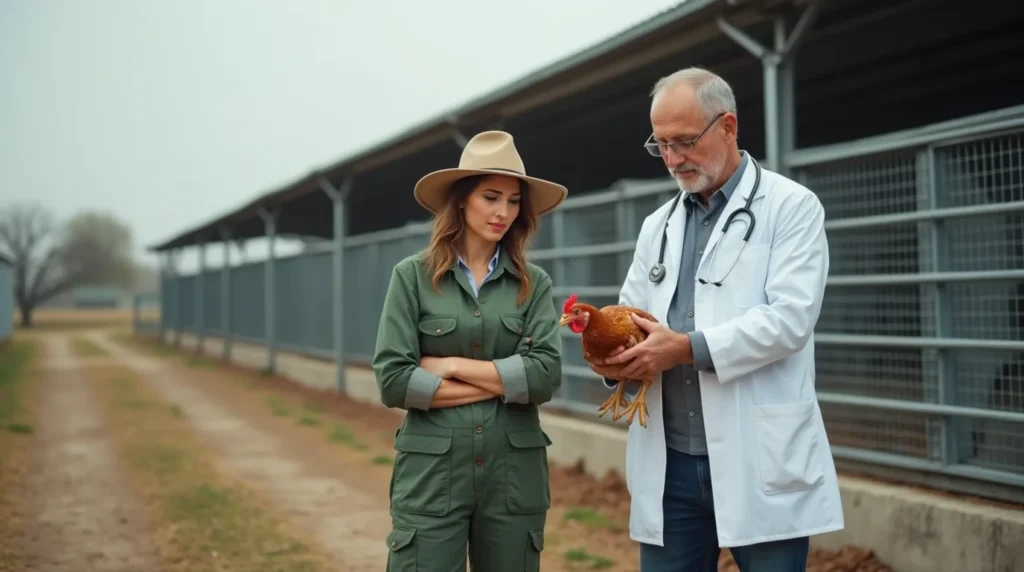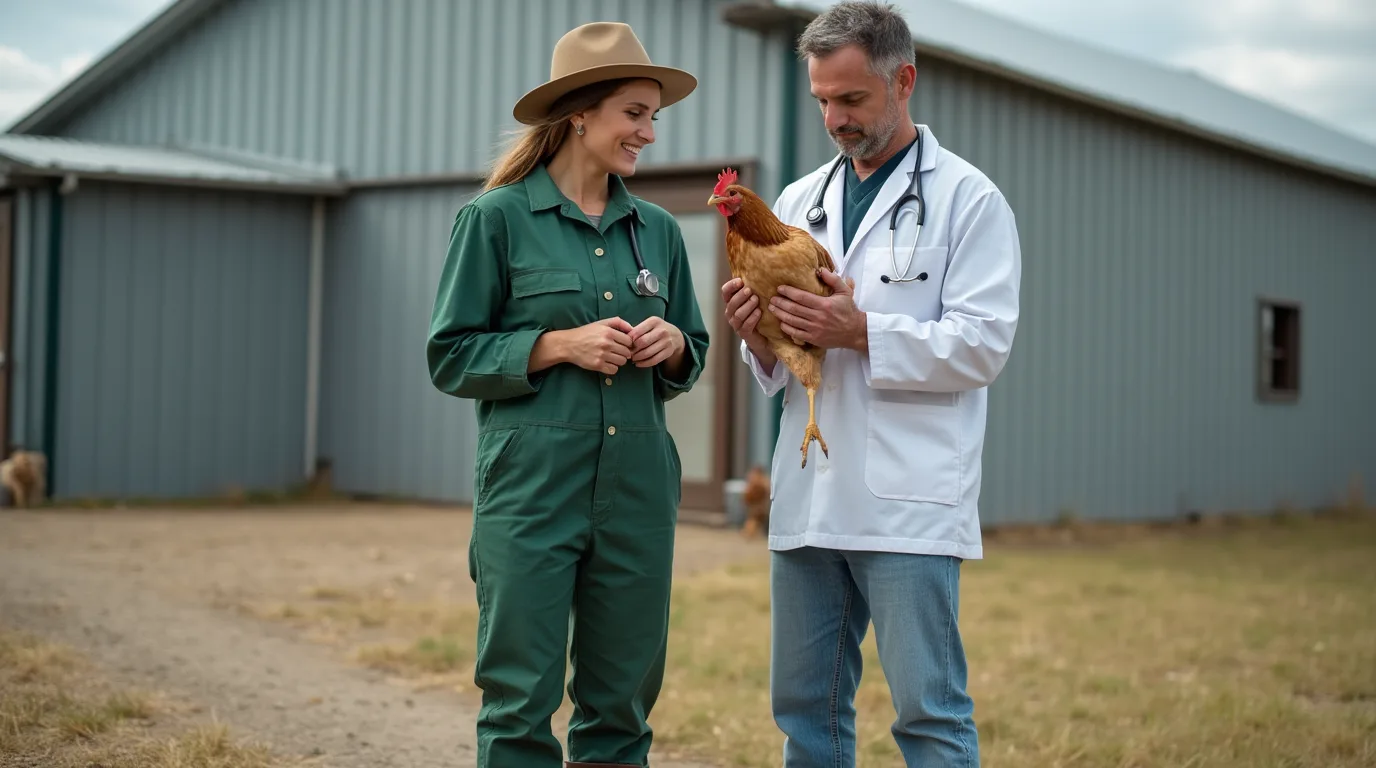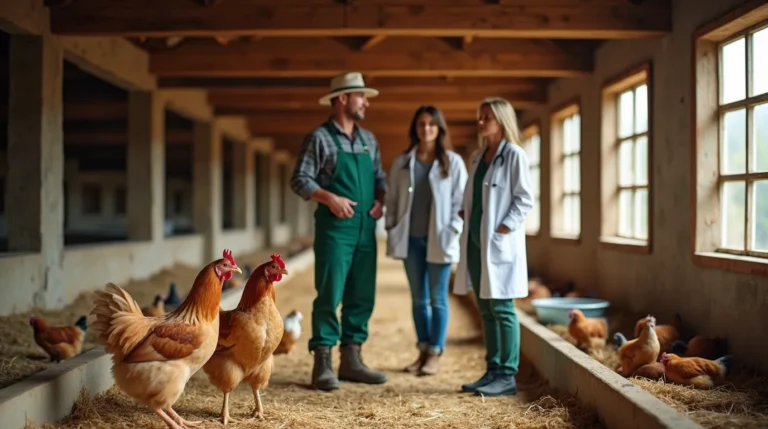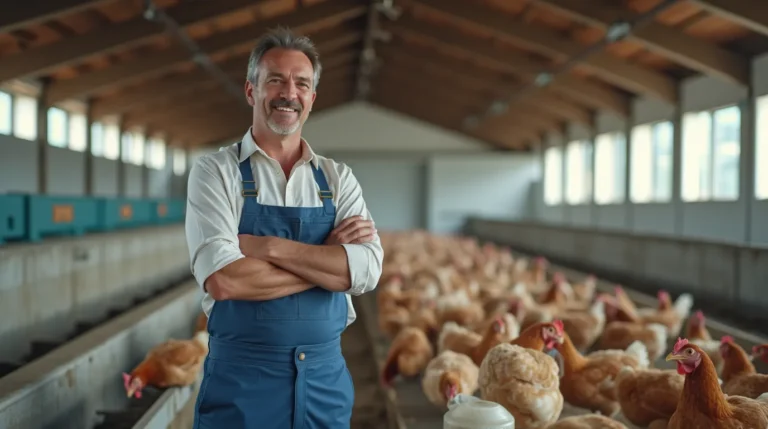Protect your poultry from devastating ammonia poisoning in poultry farms , with expert air quality control tips. Learn how to maintain a healthy environment for optimal bird health and farm productivity.

Table of Contents
Ammonia poisoning represents one of the most insidious threats to poultry farm productivity and bird health. Every year, thousands of farmers struggle with the devastating consequences of poor air quality, leading to reduced bird performance, increased susceptibility to diseases, and significant economic losses. This comprehensive guide will explore the critical aspects of ammonia poisoning in poultry farms and provide five essential air quality control tips to safeguard your feathered investments.
Understanding Ammonia Poisoning in Poultry Farms
What is Ammonia Poisoning?
Ammonia poisoning occurs when high concentrations of ammonia gas accumulate in poultry housing environments. Primarily generated from bird droppings and decomposing organic matter, ammonia can quickly reach toxic levels if not properly managed.
Key Sources of Ammonia in Poultry Environments
- Accumulated bird droppings
- Wet litter conditions
- Inadequate ventilation
- Excessive bird density
- Improper waste management
The Impact of Ammonia on Poultry Health
Physiological Effects
- Respiratory System Damage
- Destroys respiratory tract epithelial cells
- Reduces lung capacity
- Increases susceptibility to respiratory infections
- Performance Reduction
- Decreased feed conversion rates
- Reduced weight gain
- Lower egg production
- Immune System Compromise
- Weakens natural disease resistance
- Increases vulnerability to secondary infections
Economic Consequences
| Ammonia Level | Performance Impact | Estimated Economic Loss |
| 10 ppm | Minimal | 1-3% productivity drop |
| 20-30 ppm | Moderate | 5-10% productivity loss |
| 50+ ppm | Severe | 15-25% economic impact |
5 Essential Air Quality Control Tips for Ammonia Management
1. Optimize Ventilation Systems
- Install high-efficiency ventilation equipment
- Ensure consistent air circulation
- Implement automated climate control systems
- Maintain proper air exchange rates
Pro Tip: Aim for 4-5 air exchanges per hour in closed poultry housing systems.
2. Implement Advanced Litter Management
- Use highly absorbent litter materials
- Practice regular litter turning
- Maintain optimal moisture levels (20-25%)
- Remove wet spots immediately
- Consider using litter amendments to reduce ammonia production
3. Control Bird Density
- Follow recommended stocking densities
- Avoid overcrowding
- Create multiple housing zones
- Monitor bird growth and adjust space allocation
4. Utilize Technological Monitoring Solutions
- Install digital ammonia sensors
- Use real-time monitoring systems
- Set up automatic alerts for dangerous ammonia levels
- Integrate data tracking for continuous improvement
5. Regular Cleaning and Disinfection Protocols
- Develop comprehensive cleaning schedules
- Use EPA-approved disinfectants
- Implement thorough washing and drying procedures
- Rotate and rest housing areas periodically
Recommended Poultry Farm Products on Amazon
- Digital Ammonia Detector
- Professional Litter Management Kit
- Poultry Ventilation Control System
- Advanced Coop Cleaning Solution
Frequently Asked Questions (FAQ)
Q1: What ammonia levels are considered safe for poultry?
A: Ammonia levels below 10 ppm are considered safe. Levels between 10-25 ppm may cause mild performance issues, while levels above 25 ppm can be severely detrimental.
Q2: How often should litter be replaced?
A: Depending on the housing system and bird type, litter should be completely replaced every 1-2 flocks or thoroughly treated between production cycles.
Q3: Can ammonia poisoning in poultry be reversed?
A: Early detection is crucial. If caught early, reducing ammonia levels and providing supportive care can help birds recover. Severe cases may result in permanent respiratory damage.
Q4: Are certain bird breeds more susceptible to ammonia?
A: While all poultry are vulnerable, younger birds and more sensitive breeds like layer hens tend to be more affected by high ammonia concentrations.
Q5: What are the first signs of ammonia toxicity?
A: Look for:
- Increased respiratory rate
- Reduced activity
- Watery eyes
- Decreased feed intake
- Unusual vocalization
Conclusion
Effective ammonia management is not just about protecting your birds—it’s about optimizing your entire poultry farm’s productivity and profitability. By implementing these five air quality control strategies, you can create a healthier, more efficient farming environment.
Call to Action: Share your experiences with ammonia management in the comments below! Have these strategies worked for you? What challenges have you encountered?
For more expert recommendations on poultry farm management, visit BlithePet and explore our comprehensive guides.





